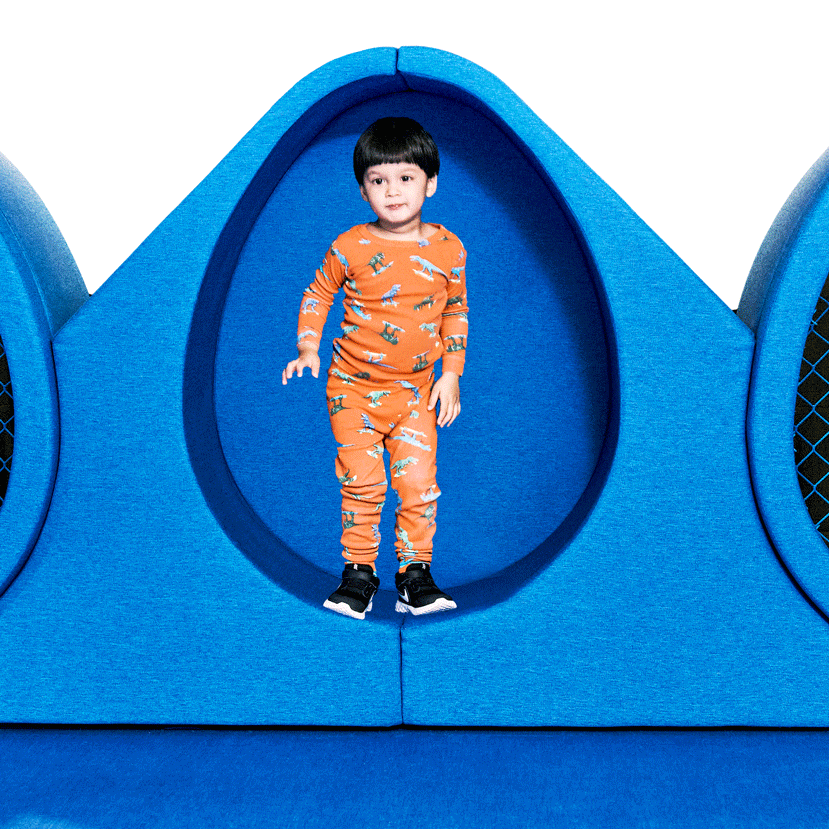Proprioception, the awareness of our body within space, is often referred to as our sixth sense. In today’s world, where so much of daily life unfolds on digital platforms, this sense is often left behind. Our days are increasingly flattened into two dimensions, lived through screens. The effects of excluding our bodies from everyday experiences are far reaching, touching both our physical and mental well-being. Above all, for children.
At no time in human development is the relationship of the body and the physical environment more visceral than during early childhood.
Children learn with their bodies. Putting objects into their mouths, banging on objects, tucking themselves into nooks and crannies are all part of their exploratory strategies, and an integral part of their developmental process.
Insertion is a common spatial exploration strategy for children. They insert their hands, feet, legs or their entire body to discover the world around them. The spaces that allow for insertions of their bodies create a fun learning environment.
The sinous forms of the playscapes encourage spatial exploration and help develop gross motor skills.
Children learn to socialize through movement, as they discover the world around them.
Movement is also a part of play time; it is the most improvisational part of learning, where children discover themselves and their surroundings through movement.





